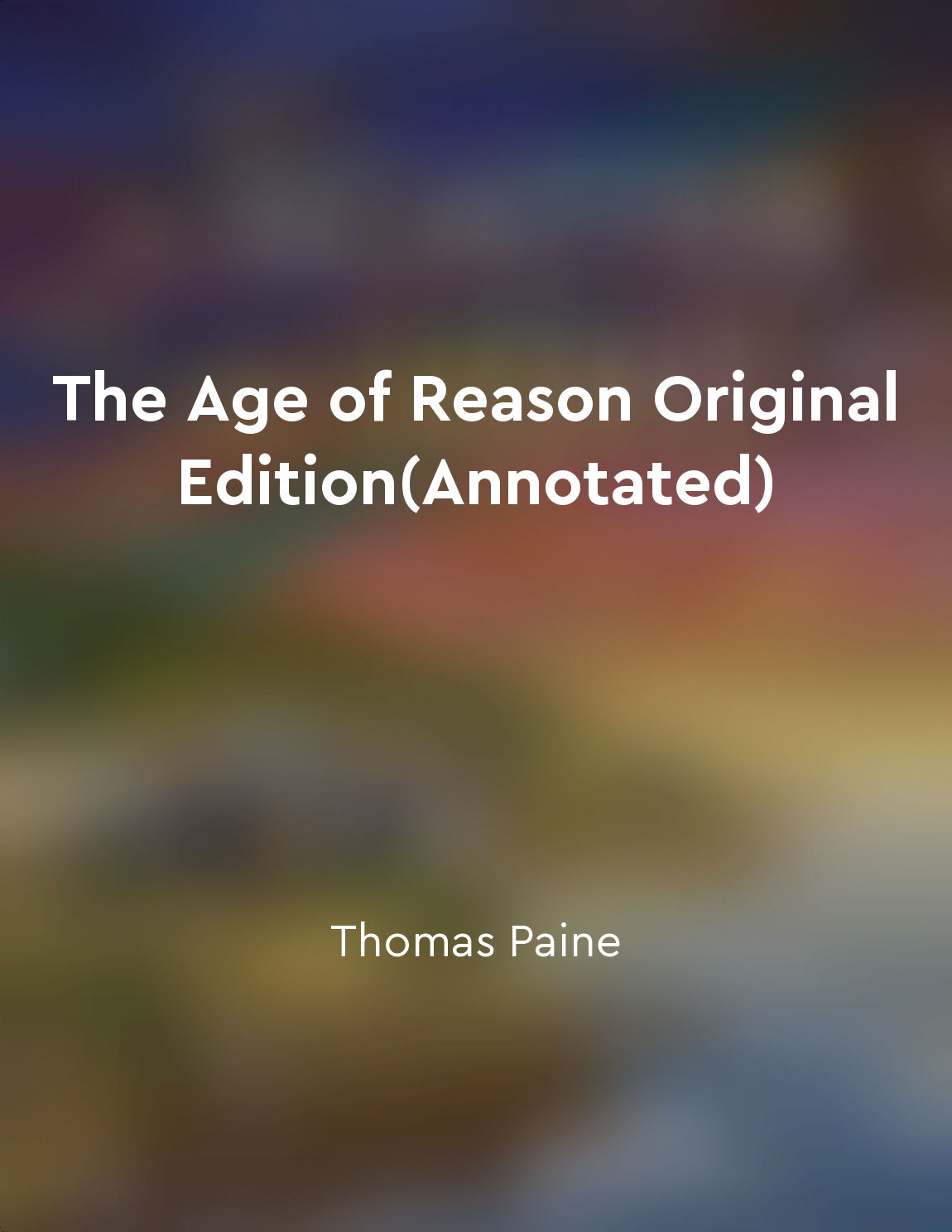Religious texts should be scrutinized with a critical eye from "summary" of The Age of Reason Original Edition(Annotated) by Thomas Paine
It is essential for individuals to approach religious texts with a critical eye. This means questioning the content and teachings presented in these texts rather than accepting them blindly. By scrutinizing religious texts, one can gain a deeper understanding of their meaning and significance. When examining religious texts critically, one must consider the context in which they were written. It is important to remember that these texts were written by human beings who were influenced by their own beliefs, biases, and cultural norms. As such, it is necessary to analyze the historical and cultural background of these texts to fully comprehend their message. Furthermore, scrutinizing religious texts allows individuals to identify any inconsistencies or contradictions within the text. This can help one to discern the underlying meaning of the text and determine whether it is a reliable source of knowledge and guidance. In addition, approaching religious texts with a critical eye can help individuals to distinguish between literal and symbolic interpretations. Many religious texts contain metaphorical language and allegorical stories that may not be meant to be taken literally. By critically analyzing these texts, one can uncover the deeper symbolic meanings behind the stories and teachings presented.- By scrutinizing religious texts with a critical eye, individuals can engage in a thoughtful and meaningful exploration of their beliefs and values. This approach encourages individuals to think for themselves and not simply accept what is presented to them without question. It is through this critical examination that one can truly understand the essence of religious texts and their relevance in the modern world.


